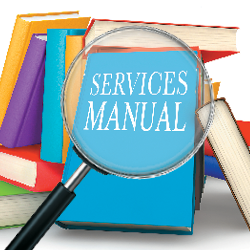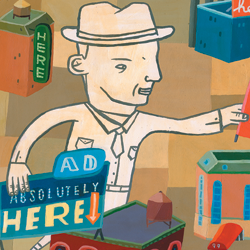|
REGISTRATION REQUIRED
exhibiting 101
 Final Destination: Success
(If You Meet the Deadline)
Deadlines do more than keep you at work late. They keep you on time and on budget, and they're crucial to running a successful event. By Betsy Earle
Timing is everything, especially when it comes to preparing for a trade show, and particularly if it's your first. In order to keep our team on track, my company incorporates all of our clients' deadlines into a project management system so that nothing gets missed. I recommend you do the same for your program. Here are some of the key deadlines to include:
1. Booth space booking. Space selection for a trade show is sometimes based on a points system, where exhibitors that have a history with the show have priority in choosing their space. Other shows base their selection schedule on booth size. Pavilions get first choice, followed by large islands, followed by 20-by-20 booths, and finally, the inline exhibits. Some shows give preference to exhibitors that are members of their operating organization and others will refuse to accept non-member exhibitors (or will charge them a premium). Because of booth selection process intricacies, get way ahead of this deadline, which, in many cases, hits before the prior year's show takes place. The first step is to reach out to a show's account manager, get on their lists, and lock down their schedule. If you're already an exhibitor, mark those dates on your calendar so you don't miss them. If you aren't an exhibitor, find out how to get in line. Let's say you want to exhibit at the National Restaurant Association Show. This show invites exhibitors from the current year to an appointment for space selection for the next year. The appointments take place during the show, which means current exhibitors always have priority. Missing that on-site appointment could cost you a space at the front of the show floor, or worse, cause you to not get a space at all. If you're a new exhibitor, be ready to sign up for a space right after the show closes. Also, be aware of the popularity of the show you're interested in. Some have waiting lists and some always have spaces open. 2. Hotel reservation deadlines. What applies to booth selection can sometimes apply to hotel room blocks. Some of the larger shows offer exhibitors an opportunity to book rooms for the following year during the current year's expo. Other shows open hotel room blocks shortly after the current show closes, and some open those blocks closer to the following show. Once you've selected your room block, you will be given a certain period of time to assign names to the rooms. Let's say for a large exhibit you need 20 rooms staggered over the course of the show. Many of the hotel reservation portals will allow you to book the block now and add names later. Put that name assignment deadline in your calendar because any rooms without assigned names could get removed from your block, leaving you without room for your guests. 3. Early discount deadlines. Early discount deadlines typically hit either 30 days prior to a show or 21 days prior to a show install. Getting your show service orders in prior to the early discount deadline will potentially save you up to 30 percent on your costs. For example, a $300 table could cost $210 to rent if you book before the deadline. Show services include items such as flooring, furnishings, porter service, cleaning service, electrical, plumbing, labor, and rigging. These services contribute substantially to your total event cost, and by meeting that early deadline, you could literally save thousands of dollars. The same concept applies to other ancillary services that event marketers rely on. Floral providers that allow you to rent floral or plant arrangements and equipment companies that offer rental refrigerators or ovens will sometimes offer a discount if you meet an early discount deadline. Record this deadline — it won't necessarily be the same as the general service contractor deadline. 4. Shipping deadlines. There are two key dates to note when you're making plans for shipping your exhibit properties and your product display pieces, and you must select one. The first is called advance warehouse, which is when you have access to a staging area to store your exhibit prior to the show set-up days. The other option is called direct to show, which is when your freight carrier delivers your freight directly to the convention center and loads it from the truck into your exhibit space. Each of these options has a set of parameters regarding when you can ship, and each comes with its own set of advantages and disadvantages. Not knowing the different deadlines can put you in a position of facing surcharges. For example, the advance warehouse might be open from 9:00 a.m. to 4:30 p.m., Monday through Friday, through April 7. Direct-to-show instructions might indicate that you need to deliver at 8:00 a.m. on April 15. Anything delivered outside of the indicated times and dates will likely incur a fee, typically referred to as an off-target surcharge. The surcharges are based on a fee per pound or based on CWT (hundredweight), which is a fee per every 100 pounds of freight. If the surcharge is $20 per CWT or $2 per pound, a 1,000-pound exhibit surcharge would cost you $200. 5. Exhibit Display Deadlines. Have your exhibit display component and graphic deadlines on your radar far in advance of installation day. Most exhibit partners will have a set of deadlines for your booth design, graphics, flooring, and furnishings. This schedule will tell you exactly how long you have to make changes to your exhibit before you make your final sign off. Note that your exhibit partner sets these deadlines based on experience and logic. For example, there is a certain date by which your graphics need to be printed in order to make it to the show on time. If you miss or adjust these deadlines, the graphics will get delayed in production, which puts you at risk of not having them at the show. Please note that every change you make to your design trickles down to other areas of your trade show program. For example, what if you decide to keep moving the TV monitor placement until the last minute? Every time you move one of these monitors to a different spot, you impact the electrical diagram. Thus, changes will need to be made in multiple places. Your exhibit partners understand the importance of flexibility, but the pieces of the puzzle have to fit in order for installation to go seamlessly on site. 6. Badge registration. Most shows will allow you to register for exhibitor badges up until the very last minute. However, some shows will schedule price increases on any badge over your exhibitor allotment. Badges are typically allocated based on square footage of your booth, so the larger the booth, the more badges you will receive. If you think you're going to go over your allotment, make sure that you know when that price increases and get your badges assigned early, as it could save you hundreds of dollars. Some of the more expensive shows charge a high entrance fee, but have an early discount deadline and sometimes even a super early discount deadline. If you know you'll need extra badges, mark these dates on your calendar so you get as many people as possible registered before the price increase happens. Even if you don't have every single name of everyone who will be there, you should still get ahead of that deadline. In other words, don't wait until you have every single detail before you proceed with registration. 7. Installation/Dismantle Schedule. Make a plan for scheduling your setup and dismantle labor according to the show's setup and dismantle parameters. If your installation schedule starts on a weekday, your labor call will most likely work on straight time, but if your installation schedule starts on a Saturday or Sunday, you will likely be looking at overtime labor. Knowing these details will help you budget and account for the differences in the cost of your labor. When it comes to your exhibit staff accessing the floor, note that this schedule will vary, and some shows will allow people onto the show floor later in the day to set up for opening the next morning. You'll need to address this on a case-by-case basis to determine what your show permits. 8. Post-show. Even though the show is over, you're not completely done. After the show closes, make sure you tie up all of the loose ends. Go to the general service contractor to obtain your post-show final invoices, collect all of your receipts, reconcile your credit cards, and load everything into your budget. You should also make sure you or your sales team follow up on your leads as quickly as possible. This is also a great time to put together a debrief of the show and discuss with your team what went well and what didn't go well so that you can plan for the following year. Once you start running multiple shows at the same time, you will have a hard time remembering what happened where. Take notes immediately at the break of show when everything is still fresh in your mind. Traditional timelines changed after the COVID-19 pandemic. The time crunch is greater than it used to be, and it seems as though information is being distributed more slowly, giving exhibit managers less time to get organized. Timelines have also changed as shows have abandoned paper forms in favor of online ordering. Pre-pandemic, a form submitted a day late had wiggle room and the GSC might give you an extension on the discount. Now, when new pricing and expired discount deadline prices can be deleted from websites immediately, it is even more important to stay on track. Once that deadline passes, there's no going back. Every show is going to have its own unique deadlines and deadline requirements. But by starting with this primer, you can put together an outline of everything you need to get from point A to point B, and you can integrate the rest of your deadlines in between. When it comes to trade show exhibit management, one of the most important pieces is keeping organized and keeping ahead of the schedule. By having all of this outlined before you get started, you will be in the perfect position to make decisions about your program in a timely manner. E  Betsy Earle, CTSM
Betsy Earle, CTSMmanaging director and founder of Event Driven Solutions LLC. Earle obtained her MBA at the University of Miami and earned her Diamond-level CTSM designation in 2018. Exhibiting101@exhibitorgroup.com
|
|
|
||||||||||||||||||||||||||||
|
|
||||||||||||||||||||||||||||
|
TOPICS Measurement & Budgeting Planning & Execution Marketing & Promotion Events & Venues Personal & Career Exhibits & Experiences International Exhibiting Resources for Rookies Research & Resources |
MAGAZINE Subscribe Today! Renew Subscription Update Address Digital Downloads Newsletters Advertise |
FIND IT Exhibit Producers Products & Services All Companies Get Listed |
EXHIBITORLIVE Sessions Exhibit Hall Exhibit at the Show Registration |
ETRAK Sessions Certification F.A.Q. Registration |
EDUCATION WEEK Overview Sessions Hotel Registration |
CERTIFICATION The Program Steps to Certification Faculty and Staff Enroll in CTSM Submit Quiz Answers My CTSM |
AWARDS Exhibit Design Awards Portable/Modular Awards Corporate Event Awards Centers of Excellence |
NEWS Associations/Press Awards Company News International New Products People Shows & Events Venues & Destinations EXHIBITOR News |
||||||||||||||||||||
|
||||||||||||||||||||||||||||






